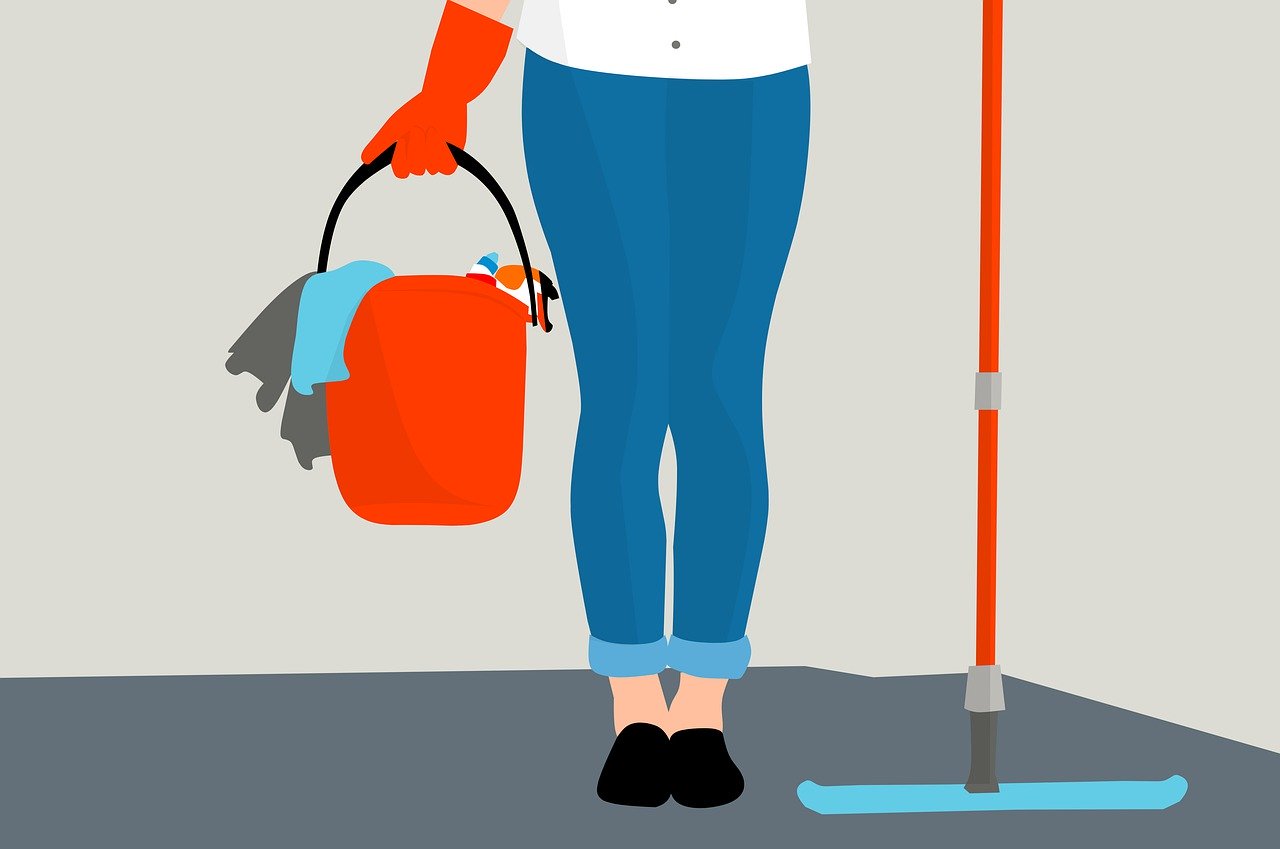Myth-Busting Coronavirus Deep Cleaning – Part Two
Christian Harris, Founder of Slip Safety Services & Decontamination Cleaning UK, continues his deep cleaning myth-busting. Harris outlined his advice on the three...
Read Full Article
Christian Harris, Founder of Slip Safety Services & Decontamination Cleaning UK writes about how to ensure your building is clean, hygienic and safe to reopen.
With several years of experience behind him, Harris helps commercial clients as well as insurers, brokers, lawyers and other stakeholders with slip safety and floorcare challenges.
In this opinion piece, Harris outlines his advice on the three main aspects that make up true cleanliness, to help create a framework to provide a clean, hygienic and safe environment for staff and customers.
"The link between cleanliness and safety (including in hygiene) has also not been communicated well. Cleaning should be considered your first line of defence in your staff and clients’ health and safety – from viruses to slip safety to mental health."
–Christian Harris
Founder, Slip Safety Services & Decontamination Cleaning UK
It’s clear that the cleanliness of your building has never been more important than it is now. We simply won’t go from being on hygiene lockdown to accepting the poor standards of cleanliness that have prevailed, in all sectors, in the UK for a number of years. If there’s one thing you must know, though, it’s this: you cannot disinfect your building without it first being effectively cleaned
According to the NHS, disinfection is "a process that reduces the number of micro-organisms to a level at which they are not harmful and is only effective if the surface is thoroughly cleaned with a detergent solution beforehand”.
Many building owners have been engaging in various “COVID-19 killing” cleaning activities, but have they been hoodwinked? Do building operators, and even their contractors, know the difference between cleaning, sanitising and disinfecting? How can you be certain that your buildings have been effectively deep cleaned and disinfected before you reopen them after lockdown?
Cleanliness (the outcome) has always been valued, at least ostensibly. Yet cleaning (the delivery method) has not. Therefore, budgets have been cut, shortcuts have been taken, and outputs of cleaning (whether in-house or outsourced) have been poor.
The link between cleanliness and safety (including in hygiene) has also not been communicated well. Cleaning should be considered your first line of defence in your staff and clients’ health and safety – from viruses to slip safety to mental health.
This is definitely not to criticise cleaning contractors: I have very rarely ever seen a contract specification that is not being met – but there is often a vast gap between what the contract says must be delivered (cleaning) and what the client’s ideal outcome is (cleanliness). If you pay a bronze price you won’t get a gold standard. Saying that, standards delivered have been poor for some time, so these types of companies might not be able to deliver an effective deep clean to get you back up to standard.
We must recognise that this chronic underinvestment has led to generally poor outcomes. This often isn’t exhibited by “filthy” standards but rather by “evenly poor” standards. Most floors, for example, probably don’t look dirty to a layperson until you show them what the colour of it really is if it is cleaned effectively.
If buildings are not clean, they are not hygienic and they are not safe.

Picture: Christian Harris
You’re probably thinking that your buildings look okay. And yes, they may well look okay. But just as the coronavirus cannot be seen, many other types of contamination are invisible to the naked eye, too.
Imagine you were being wheeled in for an operation and you saw the surgeon spitting on his handkerchief and wiping down the scalpel he was about to use to cut into you. That handkerchief “looks” clean, but it definitely is not! How surfaces look aesthetically is only one part of the puzzle of achieving an effective cleaning regime, and therefore the outcome of a hygienically clean and safe building.
It’s possible to clean a commercial kitchen floor, for example, with a mop and bucket with fresh water. Afterwards, it may look slightly cleaner aesthetically than it did before. But has the contamination been removed, have any germs been removed, have any residues that may make the floor slippery been removed? You’ve cleaned it, but you haven’t cleaned it effectively.
I call this scientific, holistic approach 3D Cleanliness. There are three key metrics that you need to be aware of. One is subjective and two are 100% measurable.
Do surfaces look and feel clean? Can you smell contamination? As mentioned above, often we see surfaces that are evenly dirty so unless you have knowledge of what clean really looks like, you may feel they are ok. And dirt builds up slowly. I use the analogy of your wedding suit: five years after your wedding you might not fit into this, but you probably don’t feel like you’ve gained much weight because it happens very gradually over a long period of time. Dirt building up on a surface is the same.
You need to figure out what true cleanliness is on your surfaces and use that as a benchmark to maintain.
I recall visiting a theme park and looking at a restaurant area where they had a vinyl floor. It looked clean. But, when you started walking over it, your feet were sticking to the floor because of the level of grease build-up. You can see this in all sorts of other environments as well. Think of pub or nightclub carpets, for example: they may look clean, but clearly they’re not clean if they are sticky! Any contamination on or within a surface will act as a magnet for further contamination to build up, too.
Smell is very visceral to building users, and it’s likely they will notice this before anything to do with aesthetics. A clean, crisp smelling in the air will give people the confidence that you are doing what you need to do to keep the environment clean. Don’t take this to the extreme though, and plug in fragrance-producing devices in every room without actually doing the cleaning as well. Masking the problem doesn’t make your building clean or safe – it just gives a false sense of security.
There is a difference between looking clean and being hygienically clean. You can test this using various different methods to ensure that you are actually cleaning the surface and removing all bacteria from it.
Again, going back to our mop and bucket example, it might be that that surface looks cleaner after we’ve mopped water on it, but if we were to test the hygiene levels, before and after, it would probably have little to no difference at all.
And, crucially, a sanitiser or disinfectant chemical may also be totally ineffective. More on that below.
This relates only to floors. As with hygiene, a floor can appear clean to the naked eye, but actually have, invisible, or ingrained contamination within it. Any contamination covering within the pores of a floor will have an effect on its slip resistance. Given slips are the biggest cause of injury and insurance claims in most sectors, this is a valuable measurement to get right.
Measuring the slip resistance of a floor will give an excellent indicator as to how clean it truly is. If it’s not a smooth surface but is slippery when wet, there is probably some kind of contamination on it.
I would strongly advise that you need to consider all three aspects. Firstly, for your own due diligence so you have done everything you can to provide a clean, hygienic and safe environment for staff and customers. But secondly from a perception perspective: if you don’t achieve on all three points, building users will notice.
In the next part of this guide, we will look at how should you go about delivering the outcomes that you want.
Picture: A graphic showing a person holding a mop and carrying a bucket of cleaning equipment
Article written by Christian Harris | Published 20 May 2020
Christian Harris, Founder of Slip Safety Services & Decontamination Cleaning UK, continues his deep cleaning myth-busting. Harris outlined his advice on the three...
Read Full ArticleCoviX101 is a non-toxic product that claims to use molecular nano spikes to kill microorganisms. Developed by ALFA Eco Tech, when CoviX101 is applied to a surface it...
Read Full ArticleData from Public Health England suggests that office environments have had more COVID outbreaks than other workplaces. Figures obtained by the BBC 5 Live...
Read Full ArticleAs a direct result of the COVID-19 pandemic, keeping touchpoints in any building clean and safe has taken on an urgent significance in 2020. Despite UK...
Read Full ArticleThe British Institute of Cleaning Science has released the much-needed industry publication: “BICSc Standards & Best Practice.” At a time where...
Read Full ArticleThe NHS is trialling a new technology solution which claims to replicate the science of outdoor air in indoor spaces. Airora Professional, developed by PA Consulting...
Read Full ArticleAs the government changes its advice to “work from home if you can” amidst a national increase in coronavirus cases, good hygiene in the workplace has never...
Read Full ArticleRome Fiumicino Airport is the first airport in the world to be certified with the COVID-19 Five-Star Airport Rating, by international air transport rating agency...
Read Full ArticleThe image of cleaning operatives in full hazardous material whole-body PPE has become a familiar one in 2020 - but are there occasions where we should question its...
Read Full ArticleABM has established an Expert Advisory Council, composed of external leading experts in infectious disease and industrial hygiene. The advisory board will...
Read Full Article